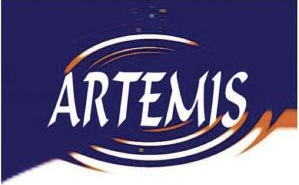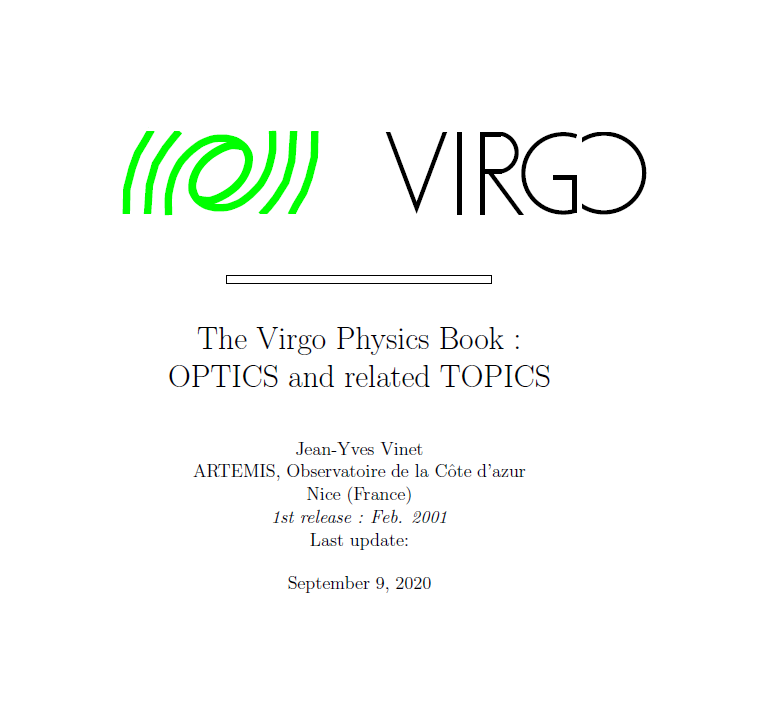The Virgo Physics Book: OPTICS and Related TOPICS, by Jean-Yves Vinet
Clic on the cover image above for opening the file (pdf,11 Mo)
The aim of this ’Virgo Physics Book’ (VPB) is to keep track of the various theoretical or numerical studies carried out during the development of the Virgo conceipt and its realization. This is necessary for several reasons.
- The first reason is to present outside the collaboration, in a comprehensive document, the sum of the theoretical researches carried out during the R&D period (not fully over, considering future improvements), in order to show what physical effects have been studied.
- The second reason is to prevent loss of memory in the collaboration. It is convenient to be able to find in one place the state of the art in the various domains of modeling. Evolution of the technology, of the materials, etc... makes necessary to re-estimate from time to time the orders of magnitude of different sources of noise, for instance, and check wether the hierarchy is still valid. For doing this, the principles must be available.
- The third reason is to provide a reference document for the young searchers entering the collaboration allowing them to become efficiently acquainted with the principles of the experiment. In this spirit, some ”frequently asked questions” are treated, even if the relation with Virgo is not direct.
The principle of the document is thus to present all theoretical contributions of the Virgo teams in a comprehensive way. This is not a compilation of Virgo notes, although obviously it contains some of them, nor a course of physics, although obviously some general principles are recalled.
The VPB contains some works related to optics and other issues strongly related to optics. The principles of interferometry are recalled, then the various configurations of interferometers. The various principles of optical modeling are presented (propagation of light, simulation of cavities, of interferometers), and also the methods of analyzing mirrors. The opto-thermal problems are studied (thermal lensing, distortions), and the part of thermal noise studies related to the mirror substrates though a special volume should be dedicated to thermal noise issues. The modulation-demodulation theory is also described.
Please report possible errors or misprints to
vinet@oca.eu
N.B.:
From time to time, this document could be improved





